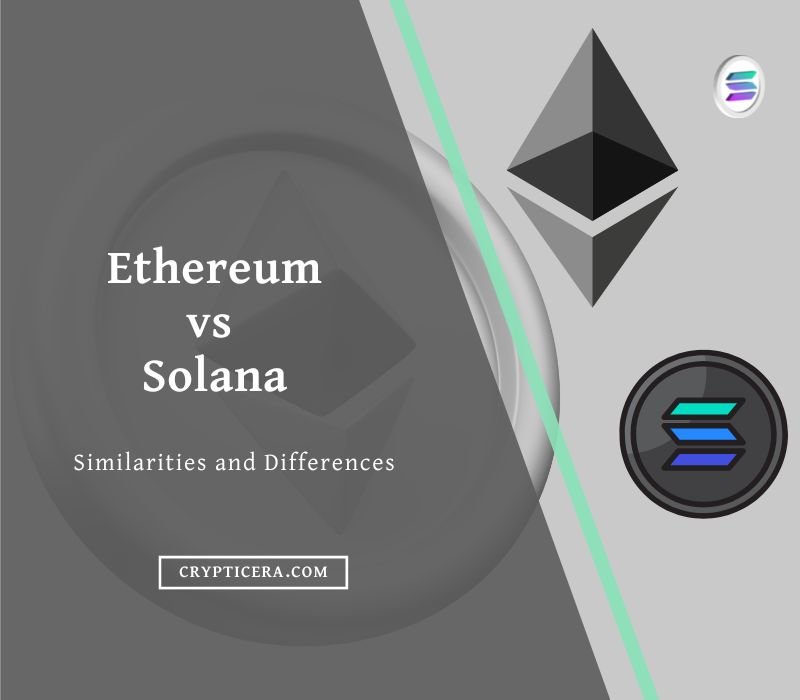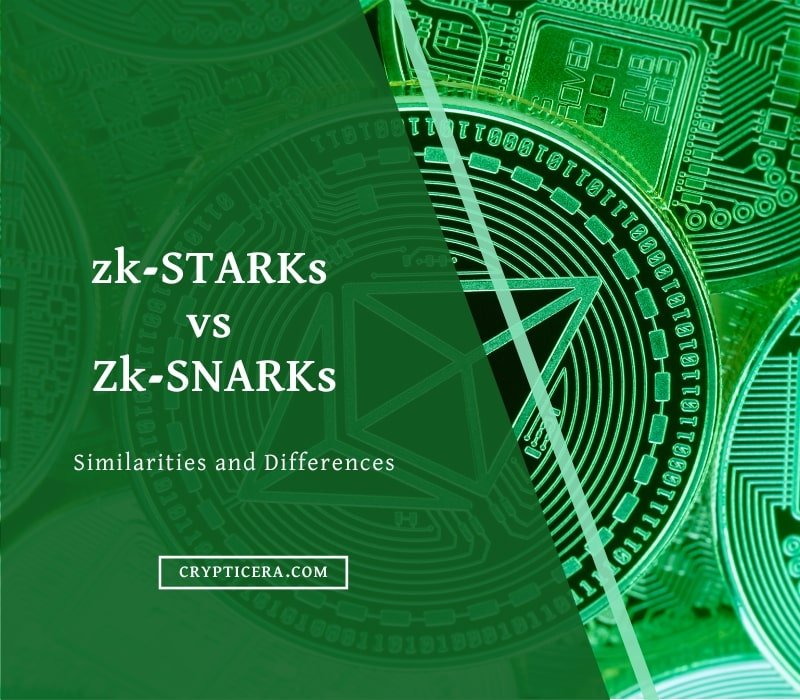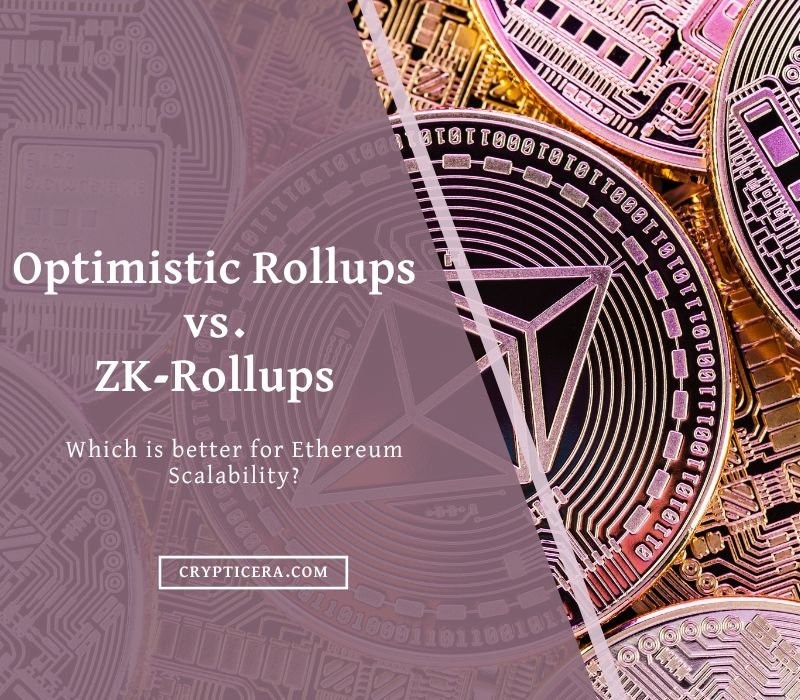As the crypto market grows and evolves, more and more blockchain projects emerge. Two such projects that have gained significant attention are Arbitrum and Solana.
Both of these projects aim to provide faster and more efficient transactions on their networks.
In this article, we will compare “Arbitrum vs Solana” to help you decide which one is better for developers and investors.
Quick Verdict:
- Solana is more scalable than Arbitrum due to the PoH consensus mechanism.
- Arbitrum is fully compatible with Ethereum virtual machine (EVM), handling a large number of transactions off-chain using Optimistic Rollups.
Arbitrum vs Solana: Key Differences
| Criteria | Arbitrum | Solana |
|---|---|---|
| Launched Date | 2021 | 2017 |
| Token | ARB | SOL |
| Market Cap | $1.9B USD | $9B |
| TPS | 40,000 TPS | 65,000 TPS |
| Block Time | ~4.5 sec | ~0.4 sec |
| Cross-chain Compatibility | Yes | No |
| Consensus Algorithm | Optimistic Rollup | Proof-of-History |
| Gas Fees Model | Variable | Fixed |
| Smart Contracts | Yes | Yes |
| Decentralization | Partially | Yes |
| Ecosystem Support | Growing | Developed |
| Security Level | High | High |
What is Arbitrum (ARB)?

Arbitrum is a layer 2 scaling solution built on top of Ethereum. It aims to provide fast and cheap transactions while still maintaining the security and decentralization of the Ethereum network.
It achieves this by using a technique called “optimistic rollups“.
This allows multiple transactions to be processed off-chain before being submitted to the Ethereum network for settlement.
Pros and Cons of Arbitrum
| Pros | Cons |
|---|---|
| High throughput and low latency | Currently only supports Ethereum |
| EVM compatibility allows for easy integration with existing smart contracts | Still in development and not yet fully decentralized |
| Lower gas fees compared to Ethereum | Limited number of dApps and users currently on the platform |
| Secure and scalable solution for Ethereum-based applications | |
| Interoperable with Ethereum and other blockchains |
What is Solana (SOL)?

Solana is a layer 1 blockchain designed for high-speed transactions. It uses a unique consensus algorithm called Proof of History (PoH), which enables the network to process over 65,000 transactions per second.
Solana also has low transaction fees and is more scalable than Ethereum and any other layer 1 scaling solutions.
It also supports smart contracts, allowing developers to build decentralized applications (dApps) on top of the Solana network.
Pros and Cons of Solana
| Pros | Cons |
|---|---|
| High throughput and fast transaction processing | Partially Centralized validator nodes |
| Low transaction fees | Not fully developed (Sometimes goes offline) |
| Energy-efficient consensus mechanism (Proof of History) | Relatively new and untested technology |
| Robust developer ecosystem and tooling | |
| Strong community support and active development |
Arbitrum vs Solana: A Detailed Comparison
Now that we understand what Arbitrum and Solana are, let’s compare the two platforms in more detail.
Speed and Scalability
One of the primary goals of layer 1 and layer 2 scaling solutions like Solana and Arbitrum is to increase the speed and scalability of blockchain transactions.
So how do the two platforms stack up in this regard?
Arbitrum can process up to 40,000 transactions per second (TPS), while Solana can handle up to 65,000 TPS.
This means that Solana is significantly faster than Arbitrum when it comes to transaction processing.
Winner: Solana
Security
Security is always a concern when it comes to cryptocurrencies, and scaling solutions like Arbitrum and Solana are no exception.
So which platform is more secure?
Arbitrum uses a technology called “fraud proofs” to ensure the integrity of transactions, while Solana uses a combination of Proof of History and Proof of Stake to prevent attacks.
Both platforms have been audited by third-party security firms and are considered to be secure.
Winner: Tie
User-Friendliness
Another important factor to consider when comparing Arbitrum vs Solana is user-friendliness.
Which platform is easier to use for developers and end-users alike?
Both Arbitrum and Solana have well-documented APIs and SDKs that make it easy to build on their networks
Arbitrum is designed to be compatible with Ethereum, which means that developers can use many of the same tools and languages that they’re already familiar with.
Solana, on the other hand, has its own programming language (Rust) and toolset, which may require a steeper learning curve for some developers.
Winner: Arbitrum
Decentralization
Finally, it’s worth considering the level of decentralization offered by each platform.
Both Arbitrum and Solana are decentralized in that they are based on blockchain technology, but the degree of decentralization may vary.
Arbitrum relies on Ethereum for its consensus mechanism, which means that it’s subject to the same centralization risks as Ethereum.
Solana has a unique consensus algorithm that is designed to be more resistant to centralization.
Winner: Tie
Ecosystem and Adoption
The size of a blockchain’s ecosystem and its adoption by developers and investors are essential factors to consider.
While Arbitrum is built on top of the Ethereum network, giving it access to Ethereum’s large ecosystem and community.
Solana has seen significant growth and adoption over the past year. Solana has also attracted several high-profile projects to its network, including Serum, a decentralized exchange.
Winner: Solana has a larger Ecosystem of DApps Projects, while Arbitrum is a newer project.
ARB vs SOL: Market Cap and Tokenomics
Arbitrum’s native token is called Arbitrum One (ARB).
Currently, ARB has a market cap of around $1.8 billion, and there are around 1.275 billion ARB tokens in circulation.
ARB is used to pay transaction fees and also serves as a governance token, allowing ARB holders to vote on proposals to upgrade the network.
Solana’s native token is called SOL, which is used to pay transaction fees and also serves as a governance token.
SOL has a market cap of around $9 billion, and there are around 387 million SOL tokens in circulation.
Solana’s tokenomics also include a unique staking mechanism, where users can stake their SOL tokens and earn rewards for participating in the network’s consensus process.
Winner: Solana has a clear advantage over Arbitrum. SOL has a significantly higher market cap than ARB
Arbitrum vs Solana: Total Value Locked (TVL)
TVL refers to the total value of assets locked in a specific blockchain ecosystem, which is a good indicator of the level of adoption and activity on the network.
As Arbitrum is built on top of the Ethereum network, it inherits Ethereum’s vast ecosystem and infrastructure.
Currently, Arbitrum has a TVL of around $2.24 billion, according to data from DeFillama.
Arbitrum is compatible with the Ethereum Virtual Machine (EVM), which means that developers can easily port their existing Ethereum applications to the Arbitrum network.
This compatibility also allows users to access popular Ethereum-based decentralized applications (dApps) on the Arbitrum network.
Currently, Solana has a TVL of around $290 million, according to data from Defi Llama.
Solana’s unique architecture and consensus algorithm allow it to handle thousands of transactions per second, making it one of the fastest blockchain networks in existence.
This speed and efficiency have attracted developers and users alike, leading to a growing ecosystem of decentralized applications and protocols built on the Solana network.
Winner: Arbitrum TVL in DeFi is 10x more than Solana’s TVL.
Related: Best Ethereum Liquid staking coins
Conclusion: Which One Should You Choose?
So, which one should you choose: Arbitrum vs Solana? The answer depends on your individual needs and priorities.
If speed and scalability are your top priorities, then Solana is the clear winner. It can handle significantly more transactions per second than Arbitrum, making it a great choice for high-volume applications.
If you’re more concerned about user-friendliness and compatibility with existing Ethereum tools, then Arbitrum may be the better option for you. It’s designed to be fully compatible with the Ethereum blockchain and EVM.
FAQs
How Arbitrum’s Optimistic Rollups Work?
Arbitrum’s Optimistic Rollups work by executing transactions off-chain while utilizing Ethereum’s security features.
Transactions are verified by a group of validators and then submitted to Ethereum’s mainnet, allowing for increased scalability and reduced gas fees. If any invalid transactions are detected, the system automatically reverts back to the previous valid state.
How does Solana’s PoH Work?
Solana’s Proof of History (PoH) is a unique consensus algorithm that leverages a verifiable delay function to timestamp transactions.
This allows for a high throughput of transactions, as validators do not need to reach a consensus on each transaction individually. Instead, they can simply validate that the transaction was executed within the correct time frame and was not tampered with.
What are Layer-1 and Layer-2 Scaling Solutions?
Layer-1 scaling solutions aim to increase the transaction capacity of a blockchain’s main layer. This is typically achieved through optimizations to the underlying consensus algorithm or network architecture.
Layer-2 scaling solutions, on the other hand, are built on top of Layer-1 and allow for the execution of transactions off-chain. This can greatly increase the scalability of a blockchain while still utilizing the security features of the main layer.
Which is better, Arbitrum or Solana?
Arbitrum’s Optimistic Rollups are well-suited for scaling Ethereum-based dApps, while Solana’s PoH provides high throughput of transactions and low latency, making it ideal for high-frequency trading and other applications.
Related:


